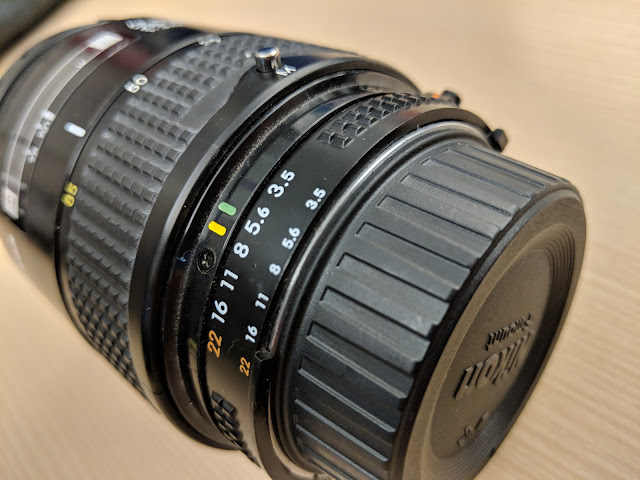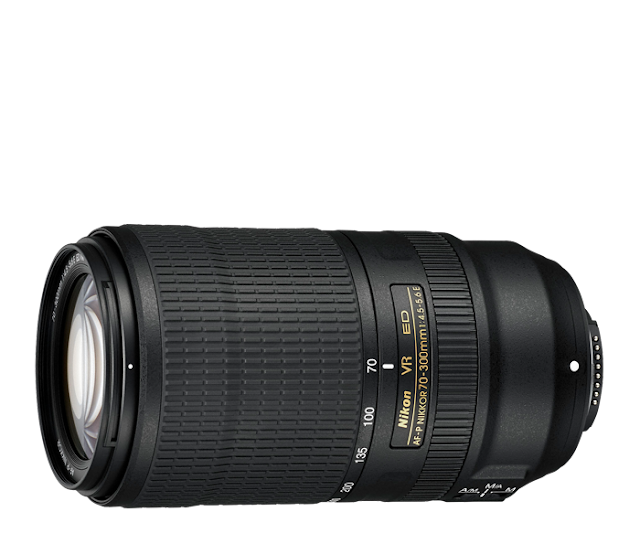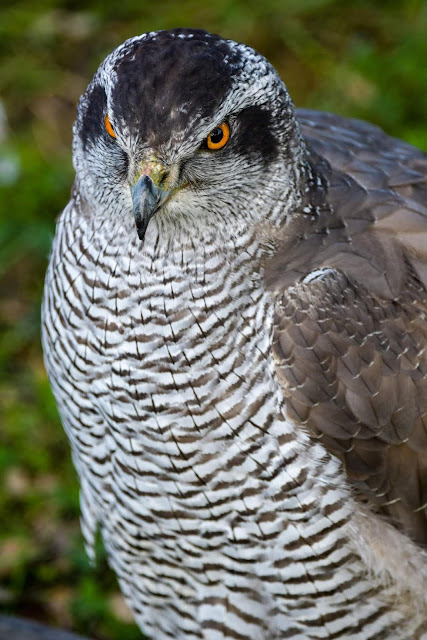Background
This is a low priced, but extremely capable legacy lens. I love shooting the Nikon Df and along with that, shooting legacy lenses or older AF glass. I was looking for a reasonable wide to middle telephoto walk about lens. Certainly you could go with something more modern, perhaps the Nikon 24-85mm f/3.5-4.5 VR. I already owned that lens and it is a fine performer. However, there is something that I like a lot about the renderings of the pre AF-S glass.Join us on our stream of consciousness on this lens.
Handling/Size/Weight
Against something like the Nikon 24-85/3.5-4.5 VR, this is a bigger, heavier lens. It is a solid metal construction. Relatively, I do not find the lens heavy at all and I also shoot Micro 4/3 as well.The zoom ring on every version of this lens that I've used has always been smooth and responsive. Budget modern zooms never really felt this good to me. While I also like the image rendering, the handling is good. You have plenty to hold on to and going from 28mm to 85mm is quick and easy.
The one big downfall of this lens in the handling department is manual focus. You have to actuate the switch on the camera body to go to manual focus as there is no full time override, like you'd get on the 24-85/3.5-4.5. On top of that, the focus ring is very tiny and hard to find. I basically don't use the manual focus feature of this lens unless I am using the macro mode.
How's that for a segue!
This lens a has a dedicated macro mode, which is great if you do not want to also carry a dedicated macro lens with you. The downside of the convenience? You lose auto focus and macro focal length is 28mm. You'll be putting the front element of the lens very close to the subject. Not the best for insects or skittish subjects, but OK for static things.
Image Quality
This lens is capable of good image quality even wide wide open. Aperture runs from f/3.5 at 28mm and then goes to f/4.5 at 85mm. As with most older lenses, it performs better stopped down. Noticeable improvement is seen at f/4 and f/5.6 respectively on the focal length range.It's IQ reminds me very much of the Nikon 80-200mm f/4.5-5.6D.
Sharpness does suffer a touch at the longer end, but it is not something that is a deal breaker.
It is basically good to go from wide to tele range.
 |
| Nikon Df 1/80, f/8, ISO 180 @ 72mm |
 |
| Nikon Df 1/100, f/11, ISO 400 @ 28mm |
Now, lets be 100% honest with each other here. Is this lens as sharp as a modern lens? Technically no, but we can sometimes put too much of a premium on ultimate sharpness. That is not always needed or desirable - and to be totally honest uber sharpness can be a bit of an overblown concept.
 |
| Nikon Df 1/60, f/3.8, ISO 900 @ 55mm |
 |
| Nikon Df 1/30, f/3.5, ISO 1600 @ 28mm |
Focusing
The focus was always very accurate. Speed is lacking compared to more modern designs. However, it is fast enough to handle most things. You may miss a shot or 2 if you have to wait for the lens to focus from close focus to infinity. The screwed gears design of this lens is not up to the speedy standard of the current AF-S marked lenses.Since this lens requires a camera body with the AF screw in the body, you'll need a higher spec DSLR body if you do not want to use this lens as manual focus only.
 |
| Nikon Df 1/100, f/8, ISO 450 @ 85mm |
 |
| Nikon Df 1/100, f/8, ISO 140 @ 85mm |
 |
Nikon Df 1/100, f/8, ISO 100 @ 45mm |
Bottom Line
Most of the time, when you discuss what is considered legacy lenses, you'll get a lot of people that would not even give them the time of day. Not sharp enough, not fast enough, too heavy...too clunky.I can understand how this lens would not be for everyone...but I challenge you to do this. Give up going out to a fancy dinner one night a month. Spend the sub $100 dollars on a lens like the 28-85mm f/3.5-4.5 or even the 80-200mm f/4.5-5.6D. Find out for yourself how these lenses perform. I think you'll see that they have more going for them than against. On top of that, you'll get to see that they are not the old clunky dinosaurs you've probably got envisioned in your head.
If you are a pixel peeper and obsessed with the penultimate of image quality, then this is not for you. However, if you are trying to find that bit of a different look then definitely give this lens a try.
Here are some additional images for you to look through.
 |
| Nikon Df 1/500, f/4.5, ISO 400 @ 85mm |
 |
| Nikon Df Macro Mode on tripod 1/30, f/3.5, ISO 250 @ 28mm |
 |
| Nikon Df 1/250, f/5.6, ISO100 @ 40mm |
 |
| Nikon Df 1/320, f/8, ISO 200 @ 35mm |
 |
| Nikon Df 1/100, f/5.6, ISO 800 @ 85mm |
 |
| Nikon Df 1/60, f/11, ISO 200 @ 28mm |
 |
| Nikon Df 1/320, f/6.3, ISO 200 @ 50mm |
 |
| Nikon Df 1/320, f/8, ISO 200 @ 85mm |




































